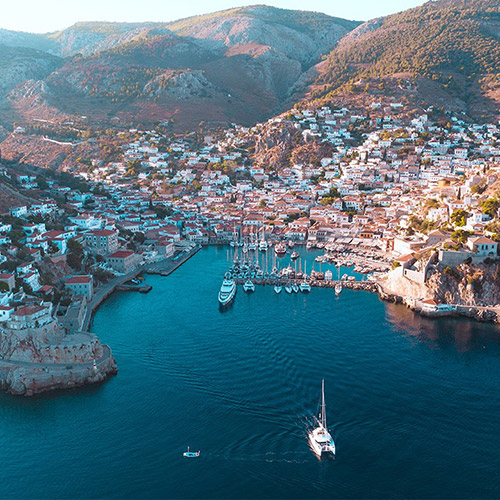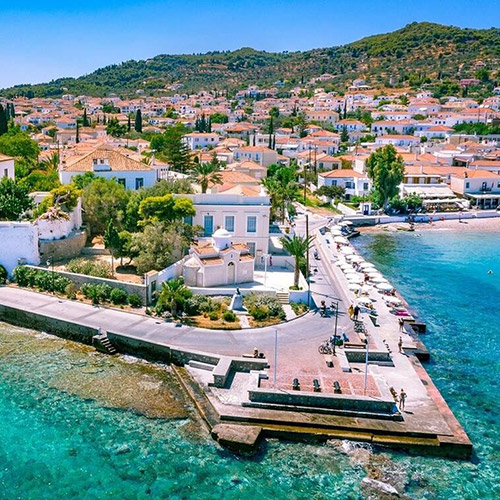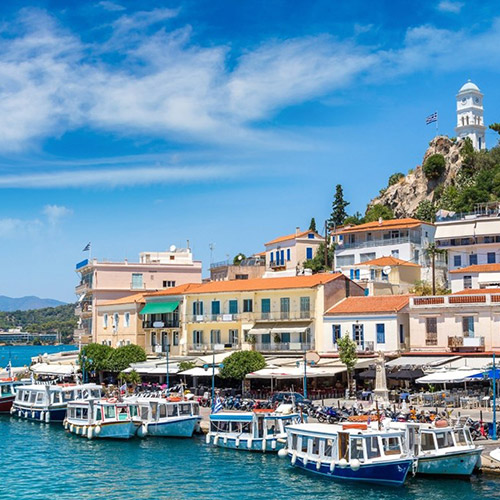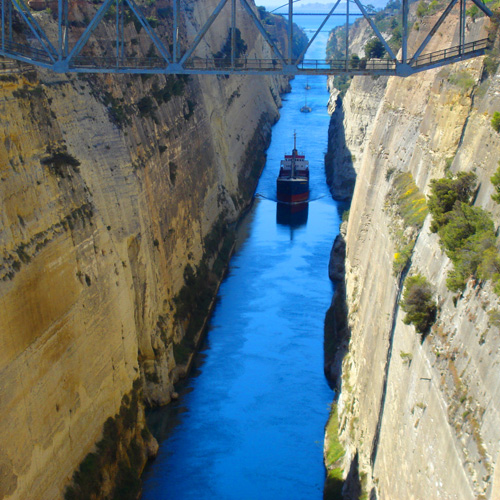One of the best preserved theatres in the world is found just 30 minutes from Anemos Nafplion. Visit the theatre with its unique acoustics that seats 16,000 people and the Santuary of Asclepios. There are live performances every July & August.
Nemea is a great places to visit for two reasons, see the amazing archaeological site and the stadium where the Panhellenic Games were held. Nemea is also famous for its wines and it is possible to visit the wineries for a tour and tasting. 40 mins trip
The Corinth Canal is just about 6.4km long and an impressive site where construction commenced in 600 BC and was completed at the end of the 19th century! In effect it makes the Peloponnese an island, separating from the rest of the mainland and taking off days for the shipping that would otherwise have to go around the Peloponnese. 45 mins trip
Delphi is a breathtaking archaeological site to visit, a little bit of a long trip from Nafplion at 3-3.5 hours but worth the effort. See the ancient sanctuary dedicated to Apollo and the navel stone (reportedly thrown by Zeus to mark where two doves met after flying opposite ways around the earth) along with the stadium and theatre.
Tolo is a tourist village around the coast about 15 minutes away from Nafplion by car. It has a sandy beach and watersports on offer. For somewehere different why not visit for a day.
Mycenae marks one fo the most important ancient civilisations in Europe. The Mycenaean era. As one of the most important archaeological sites in Greece, Mycenae is visited by thousands of people every year. Visit the famous beehive tombs and grave circles and imagine how the Palace of Agamemnon was in all its glory.
Where the Olympic games first started, Ancient Olympia has been preserved by the silt of a river that changed direction leaving lots to see in relatively good condition for its age (7th century BC) with many artifacts in the museum on site and the stadium a couple of minutes away by car. 3 hours trip
Mystra is a fascinating place to explore with many churches and monasteries dating from the Byzantine era. The hill that they are built on, close to Sparta, is a UNESCO protected area and the frescoes and buildings of great historical importance. 2 hours trip
Ancient Asini or Asine is located on the headland at the beginning of Tolo. Inhabited since the 3rd millenium BC the site has ruins from the Ancient, Geometric, Hellenistic periods and from the Venetian and Byzantine occupations. Recently the site has been reformed, an interactive gallery added making its rich history more easy to understand. 15 mins from Nafplion
Monemvasia, meaning "one entry" is a small peninsula that has been all but separated from the mainland by an earthquake and is accessible only by a narrow headland. Often liked to the "Rock of Gibraltar" Monemvasia's old town on the sea side is a wonder to see with its old castle and building that have all been restored to tradition. THe monastery of Agia Sofia on the top is a replica of the church with the same name so dear to the Orthodox religion in Istanbul.
Corinth was one of the major cities of antiquity and, controlling the only land access to the Peloponnese, it became a very welathy area. It was made up of three areas; the acropolis on the hill (Acrocorinth), the city itself at the foot of the hill and its port (Lechaion) on the coast. All this was protected by a wall which ran for 20km. Lots to see and just a 1 hour trip.
Athens, the capital of modern Greece with so much to see! Don't miss the Parthenon and the New Acropolis museum and perhaps a little shopping in the area of Plaka.
Ancient Messini (or Messene), about a four hour trip from Nafplion is an important ancient city that has been extremely well preserved. It is one of the few cities that was never destroyed through Greece's many invasions or built upon. There is a lot to see here and history buffs will love the sanctuaries, public buildings, fortifications, houses and tombs. 3.5 hours trip
Kefalari, just 20 minutes away from Nafplion and 5 kms south of Argos. It is a peaceful, pretty place with a church built on a river (not always with water). The church was originally in the cave next to the modern building which can be visited and is very popular with visitors.
Argos is one of the oldest, continually inhabited cities of Europe (perhaps the oldest) and has much history evident all around. Even walking through the city the remnants of ancient columns and intermingled with the modern day. Visit the ancient theatre, the Larissa castle high on the hill and for contrast the newly styled square. Every Wednesday and Saturday there is a local market.
Great to include a visit to the museum at Ligourio on the way or returning from Epidavros. The museum includes many artifacts found in the area of geological and historical interest including fossils, tools, shells and crystals, many from the prehistoric age.

Hydra is a Greek islands located in the Saronic Gulf and accesible by one day cruises from the Nafplio area. The authentic Greek island is rich in history since ancient times and played a major part in the Greek Revolution. Enjoy it's atmosphere and be amazed as the island has no motorvehicles. The name comes from antiquity probably originating from the multiple fresh water springs the island had.

Spetses is a Greek island the played an important role in the Fight for Greece's freedom and oozes authenticity and tradition. Visit the island on a one day cruise from Tolo and enjoy the true Greek island experience. The name comes from the Italian "Spetze" meaning spices since Spetses was an important commercial port during medieval times.

Poros, a charming Greek island located in the Saronic Gulf, is known for its picturesque landscapes, crystal-clear waters, and vibrant waterfront promenades. Visitors can explore historic sites, relax on beautiful beaches, and enjoy a peaceful, laid-back atmosphere that makes Poros a popular destination for a peaceful getaway.
A picturesque area, Kalavrita offers much to the visitor although is has a morbid history in recent times. At the end of the 2nd world war 696 males over 14 were massacred by German soldiers who subsequently burned the town and the famous Agia Lavra monastery where the War of Independence was born. Travel on the rack and pinion railway from Diakofto through stuinning countryside and mountains, visit the monastery and Kastria, the cave of lakes close by.


















